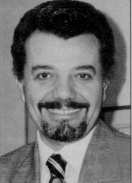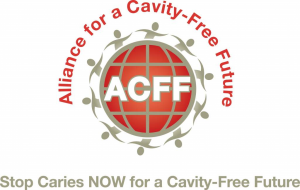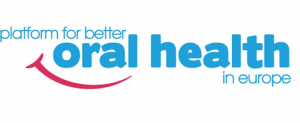
NEWSLETTER Number Two June 1996
Stop Press
Editorial
Council Matters
The Second Milupa Symposium on Nursing Caries
VIIth World Congress on Dental Trauma
Abstracts and Reviews
Advertising
|
Message from the President. Now our Academy is firmly established it is time to reassess"' both ourselves and our concepts before going further. We have to look now at quality as opposed to quantity. Our Academy, after these first years of establishment and growth, must step back and determine what we have become and where we wish to go. With 300 active members, a good number for an Academy, do we all see the role and the definition of Paediatric Dentistry in the same way? Do we want to see our speciality become the main primary oral health care provider in a certain age group? Do we all agree on the extent and magnitude of service in areas such as orthodontics, special patients, hospital dentistry, sedation and so on? Probably not. This is not surprising because each one of us, with varied education or training, is different. If we want to have a representative Paediatric Dentist in the future, we need to agree a common policy, taking into account the Guidelines we have agreed upon. We also have to go further and try and implement these guidelines in our programmes. It is time to see the European Paediatric Dentist emerge. Then we will have won the first battle in establishing our speciality in Europe. What is the future of Paediatric Dentistry in Europe? Is it secure and what is the meaning of our Academy? My strong belief is that EAPD is a growing organisation and its future is bright, challenging and very promising. I am very optimistic about our future, despite the problems encountered in some European countries, as far as our image and importance are concerned. Before we establish ourselves we have to face problems affecting both the entire dental profession and our speciality such as overpopulation of dentists and declining caries rates. However, once we recognise such changes and implement them into our new profile and role, we will be successful as we have always been in the past. I am very optimistic of the outcome for several reasons. First, because Paediatric Dentistry is concerned with the young, we are, and stay, young and fresh; we are not afraid of changes. Secondly, the very successfÏŒgresses we have organized so far, show our strength and high quality. The third Congr been a great success thanks to the tireless work of Professor Luc Martens and his team. Now we are looking towards the 4th Congress that will take place in Sardinia, Italy, under the guidance and supervision of Professor Falcolini. You are all invited. Thank you for your participation and see you in Sardinia for another successful Congress. Thank you very much. Constantine J Oulis |
|
Professor Falcolini has announced a Prize, to be funded by the Italian Society of Paediatric Dentistry, for a young Italian dentist to spend some time studying at another European centre for Paediatric Dentistry. This will occur each year. There will be a once only prize for a young dentist from elsewhere in Europe to study at a centre in Italy. The Scientific Committee will be co-ordinating with the Italian Society as to the management of this Prize. |
|
The biennial conference in Bruges was excellent as regards both scientific content and socialization. I always think it is a wonderful experience to be with so many like-minded dentists - people who really care about the dental health of our children. I found that there was an excellent rapport between delegates, with lively exchanges of ideas and information. Hopefully we have all returned home fired with enthusiasm. It is this enthusiasm that I am asking you to share. For our Newsletter to be successful I need you all to write to me. Let your Newsletter be a forum for debate on topical issues, for example: a) Do you have any clinical tips? b) Have you read an article/paper that would be of great interest to other members? c) Have you read an article that you disagreed with? I would also like to be able to include a `review article' of a topical subject at least once a year. If you feel you would like to review a particular area of Paediatric Dentistry please let me know. Now I shall await your response. Maxine Pollard |
|
COUNCIL MEETING President's Report: Professor Koch reported that the Academy was now in very good shape and was a prestigious body in Europe. Our aim now should be to improve quality of the care of children. We need to ensure a high standard of clinical care. The Academy should be the communication pathway throughout Europe on all matters relating to Paediatric Dentistry. children. We Koch reported that high standard of of The Academy should need to ensure a communication pathway Dentistry. Membership Report: The total members of all types now stands at 303. It was agreed that at least once a year Councillors would receive a list of the members in their country. The Credentials Comznittee was functioning well and the processing time for new applications was down to three months. lYeasurer's Report: The finances were very sound and the total assets of the Academy were approximately 25,000 Pounds Sterling. This would enable the Newsletter to be enlarged. The Credit Card system of paying subscriptions was now in place and working well. the Academy were approximately 25,000 Pounds the approximately 25,000 Pounds Sterling. This would enable the Newsletter to be enlarged. The Credit Card system of paying working well. EAPD Fellowship: Because of the excellent state of the Academy's finances, it was decided that a Fellowship to support the research of young members should be inaugurated. The Scientific Committee would draw up guidelines for this prize which it is hoped would be awarded for the first time at the 1998 Congress. members should be Fellowship to inaugurated. The Scientific members should be Committee would draw up it is would be awarded for the first Education Report: The Committee, under the Chairmanship of Professor Martens, completed guidelines on the postgraduate training in Paediatric Dentistry. These were now available to members from the Secretary's office. Professor Paediatric Dentistry. training in Paediatric Dentistry. These were now available to office. Constitution Report: Discussions with representatives of the EU had indicated that some further changes were desirable in the layout of the Constitution. These would now be carried out. further with These would now be were desirable in the out. Newsletter: The size of the Newsletter could now be increased as the finances of the Academy were sufficient. Dr Maxine Pollard requested more material from members in order to make the Newsletter an attractive and useful communication between all members. requested more material from members in order to make the useful all communication between Future Congresses: The next Congress will be held in Sardinia in May of 1998. The Co-President for this meeting will be Professor Guiliano Falcolini. Further details will be published in future issues of the Newsletter. Two proposals for Congresses were presented to Council. These were Bergen (Norway) and Dublin (Ireland). Provisionally it was agreed to ask Bergen to prepare a proposal for the year 2000 and for Dublin to do the same for 2002. These will be reviewed at the next Council meeting to be held in the Summer of 1997. published in future issues of the year 2000 and for Dublin to do for for presented to Council. These this meeting were Bergen Congresses were Dublin (Ireland). was agreed to ask (Norway) and Council meeting |
|
COUNCILLORS
GUIDELINES FOR POSTGRADUATE TRAINING IN PAEDIATRIC DENTISTRY Copies may be obtained by writing to the Secretary to the Secretary Membership Subscriptions Members who have not paid should contact the Treasurer as soon as possible to make arrangements to pay either by Credit Card or Bank Transfer. arrangements to Transfer. Dr John Roberts |
|
Members wishing to have any further details of the Council Meeting should contact their Councillor or the Secretary. contact their Councillor or the Secretary. |
|
This important meeting was chaired by Professor Curzon who set the scene by summarising the events of the 1st Milupa Symposium. Professor Roberts opened the session by outlining previous research projects concerning nursing caries and stressed the importance of longitudinal studies in this field. Historical data on infant feeding behaviour is unreliable and therefore a prospective longitudinal study is currently under way in London. This project has recruited infants from six months of age to investigate their feeding behaviour, oral microflora and dental effects, such as enamel hypoplasia, which may predispose to caries. investigate their studies in this field. data on infant feeding Historical data on infant feeding therefore longitudinal study is therefore a prospective longitudinal study is currently under way in London. This from six feeding and from six and dental effects, such as enamel Dr Wendt presented the results of a prospective longitudinal study carried out in Jonkoping. This investigated the relative influence of risk factors in caries incidence in children below three years of age. Caries at two and three years of age was lssociated with cariogenic foods and drinks and poorer oral hygiene at one year of age. Significant differences in oral hygiene habits were found between Swedish and immigrant mothers - regular brushing being performed by 61 % of Swedish mothers compared to only 18% of immigrant mothers. risk factors in caries incidence in of age below three years of age. and drinks of age drinks children at one and poorer oral hygiene cariogenic foods and poorer oral hygiene and drinks and poorer oral hygiene mothers - regular brushing mothers. Dr Pollard reported on a longitudinal study under way in Leeds, comparing the efficacy of different forms of dental health education in mothers' own homes at three-monthly intervals. One group is being given dietary advice alone, another receives oral hygiene instruction alone and a third receives both. It is hoped that at the end of the study the efficacy and cost-benefit of each method may be compared. health education in mothers' own homes at three-monthly given comparing the efficacy given mothers' another another dietary advice alone, instruction hoped that at the end of the study the Dr Van Der Sanden-Stoelings gave a visual demonstration of the "Bottle it up - take a cup!" campaign from The campaign from The |
|
Netherlands. This consisted of leaflets, posters and a television commercial illustrating young children with and without primary incisor caries. The healthy dentition associated with a cup and the diseased dentition with a bottle gave a strong visual message, without the need for much text and therefore suitable for all levels of learning ability. associated with a cup and the gave gave without the need for much text suitable for all levels of learning Following the four presentations of research projects concerning aetiology and prevention of nursing caries, Dr Roberts discussed treatment options for those unfortunate children who already had the disease. He explained that treatment is determined by the patient's age and compliance, the speed of the attack of the disease and facilities available. Behaviour management techniques are used where possible, but comprehensive care under general anaesthesia is often required. Composite resin strip crowns were recommended for incisors and stainless steel crowns for molars; these techniques being illustrated by Dr Robert's clinical slides. The great psychological advantages of restoration over extraction were emphasised. comprehensive disease general anaesthesia is required. Composite resin strip crowns were recommended for often comprehensive crowns and facilities techniques being care under crowns were Dr Robert's clinical often great psychological advantages of restoration over A lively discussion followed, with some debate over the term `nursing caries'. There was was some support for the term `rampant', but `nursing' emphasises the young age of the patients affected. No doubt this and many other debates will continue until the next symposium on the subject, when hopefully the results of these important projects will be presented. support for the the patients affected. No doubt will this and many other caries'. There will `nursing' when hopefully the presented. Carol Mason |
|
|
|
The Congress commenced with the `Pre-Congress' course. This considered many aspects of trauma including the long term prognosis following dental trauma and the diff'icult clinical problem of dealing with missing anterior teeth. The precongress course was very well attended with the speakers generating much discussion. The presentations by Jens and Frances Andreasen were particularly stimulating and very well received. well including the attended with the speakers following The precongress course was very Frances particularly Andreasen were
The main scientific programme ran over two days and included both overseas and local lecturers. In addition, there were short oral presentations and a poster section covering all aspects of the management of dental trauma. There was something for every dentist involved in the management of traumatised teeth. covering all aspects of the covering all aspects of the management of dental trauma. There was something for every dentist involved in the management of The conference concluded with a tribute to Professor Jens Andreasen. He presented his Lectio Magistralis onLectio Magistralis on |
|
`New Trends In Dental Traumatology'. This left participants realising that there are still many areas relating to dental trauma which require sound scientific clinical research to help us understand which treatment methods will give the best long-term prognosis. dental trauma which sound scientific clinical research to help us understand which treatment methods will prognosis. will The social programme was varied, giving participants the chance to take part in a guided walk around the centre of Florence and for accompanying persons to take a guided bus tour through Chianti country. Organised receptions and a gala dinner dance provided the evenings' entertainment. walk around the accompanying Florence and for take part in a guided a a country. Organised Chianti entertainment. The VIIIth World Congress is to be held in Guaraja-Sao Paulo, Brazil, from 22nd to 25th October 1997. If you are looking for a trip to Brazil I can recommend this conference to you. Iain C Mackie |
|
Effects of current and former pacifier use on the dentition of 24- to 59-month-old children. This study aimed to compare the occlusion of children with a past or present pacifier habit with the occlusion of children with no history of pacifier use. A total of 218 24-59 month old children were included in the study. Pacifier/oral habit history was determined by parental questionnaire. 82 children were current or former users of functional/orthodontic exerciser type pacifiers, 38 had a history of conventional pacifier use, and 98 had no history of oral habits. When compared to children with no history of oral habits, those with a history of pacifier use had a significantly larger mean overjet, and a significantly higher occurrence of class II primary canines, distal step molars, open bite, and posterior crossbite. Children with current habits were more likely to have an anterior open bite and posterior crossbite. In addition, in children with anterior open bite and posterior crossbite, a pacifier had been used for a significantly longer time. No differences were found between those children using functional pacifiers and those using conventional pacifiers. present pacifier habit and 98 had of and habits. When habits. When the history children with no history habits, those with a history of of oral habits, those with a history of larger compared to of oral a significantly of class II primary bite, of class II primary distal step molars, open open and posterior crossbite. bite, and posterior crossbite. were higher occurrence were anterior open canines, posterior crossbite. In pacifier had been used for a Criteria for caries removal at the enamel-dentine junction: a clinical and microbiological study. Cavity preparation at the enamel-dentine junction is usually considered complete when all soft and/or stained tissue is removed. This study aimed to investigate the relationship between the microbiological status of dentine and its clinical appearance. Dentine samples were obtained from the enamel-dentine junction during in vivo cavity preparation from 847 sites in 564 human teeth using a sterile bur. The colour and consistency of dentine at each sample site was noted prior to sampling. Samples were cultured for anaerobes, mutans streptococci and lactobacilli. Soft sites harboured highly significantly more bacteria than hard sites, with soft wet sites having higher levels of bacteria than soft dry sites. Stained hard sites harboured more bacteria than non-stained hard sites, but this difference was small, and probably of little clinical significance. The authors conclude that all soft dentine must be removed at the enamel-dentine junction during cavity preparation, but question the conventional recommendation to continue preparation until all hard stained dentine has been removed. The use of inhalation sedation and local anaesthesia instead of general anaesthesia for extractions and minor oral surgery in children: a prospective study. The aim of this study was to compare the acceptability, success and cost of inhalation sedation and general success and cost of sedation and general |
|
anaesthesia for dental extractions in children. The study group comprised of 133 children aged 4-17 years, of which 84% required orthodontic extractions. Only 14 patients were aged less than 8 years. All had extractions attempted using inhalation sedation plus local analgesia. Treatment was successfully completed for 120 patients, the remainder being completed under general anaesthesia. The acceptance of the procedure by the child and parent was assessed using a post-operative postal questionnaire. 97% of patients were satisfied with their treatment. Of parents claiming to have some experience of general anaesthesia, 79% felt that inhalation sedation was better than general anaesthesia. The cost per case of providing extractions under inhalation sedation was calculated to be significantly less than providing the same dental treatment under general anaesthesia. The authors conclude that inhalation sedation offers a viable, acceptable and cost-effective alternative to general anaesthesia for dental extractions in children. using a their that inhalation their procedure by the child better than general case of post-operative postal sedation was under per case of anaesthesia, 79% felt calculated same sedation was less than providing to be dental treatment under the same dental treatment under general anaesthesia. The authors children. Intranasal midazolam better at affecting amnesia after sedation than oral hydroxyzine: a pilot study. Post-operative amnesia is a desirable effect of a sedative drug. This study aimed to compare the post-treatment amnesia following nasally administered midazolam pre-medication with that produced by orally administered hydroxyzine. 21 children aged 22-48 months needing at least two restorative visits were included. All children had previously been scored as "negative" or "definitely negative" on the Frankl scale at a pretreatment assessment. At the first treatment visit, the subjects were randomly assigned to receive either 3.7mg/kg of oral hydroxyzine 45 minutes prior to treatment or 0.2mg/kg of intranasal midazolam 10 minutes before treatment, with the alternative drug being administered at the second treatment visit. Post-operative recall was tested by showing the child a picture prior to treatment and then administering a test,10 minutes post-operatively, which required the child to re-identify the object from a selection of objects (Stanford-Binet intelligence scale - memory of objects). For comparison, the same test was also administered at the initial attendance where sedation was not used. Recall in the 30 patient pre-treatment group was 90%. Recall in the 21 subject sedation study group was 70% following hydroxyzine and 29% following midazolam. The study demonstrated that midazolam produced significantly greater post-operative amnesia. or 0.2mg/kg of to treatment or 0.2mg/kg of intranasal midazolam 10 minutes before treatment, with the alternative to drug being administered at the second treatment visit. tested by picture prior to assessment. visit, the then administering a treatment and then administering a test,10 minutes post-operatively, re-identify selection of objects test,10 tested by scale - treatment and showing the child a treatment and For re-identify the object from a was also initial study comparison, the same test scale - sedation was not in the 30 patient produced |
|
Saturday 8th June PRE-CONGRESS COURSE 2&3
9th June
10th June
11th June
Pay by: Visa.... Euro/Master... Diners.... Amex.... Credit Card Number:............................................. FROM: SOUND & VISION Int BVBA |
|
Topics: Friday- Oral Medicine/Pathology, Chrldhood & Adolescent Tooth Wear, AGM Saturday- Oral Medicine/Pathology
Enquiries: Mrs Clare Ketley, Dept of Clinical Dental Scienees, |
|
Themes: Nationally and Internationally recognised keynote speakers, |
|
Main Topics Suggested Pre-congress Courses Further Information: |
|
Organiser - Norwegian Society of Pedodonhc Specialists |

 My dear Colleagues, I am very grateful for the honour bestowed upon me by the members of our Academy for electing me as President. I would like to extend special thanks to our Past Presidents: Prof. Curzon and Prof. Koch for supporting me, knowing that they will continue to do so during the time of my presidency. I would also like to thank all of you for your trust and I will work with all my energy for the gain and benefit of our Academy.
My dear Colleagues, I am very grateful for the honour bestowed upon me by the members of our Academy for electing me as President. I would like to extend special thanks to our Past Presidents: Prof. Curzon and Prof. Koch for supporting me, knowing that they will continue to do so during the time of my presidency. I would also like to thank all of you for your trust and I will work with all my energy for the gain and benefit of our Academy.

